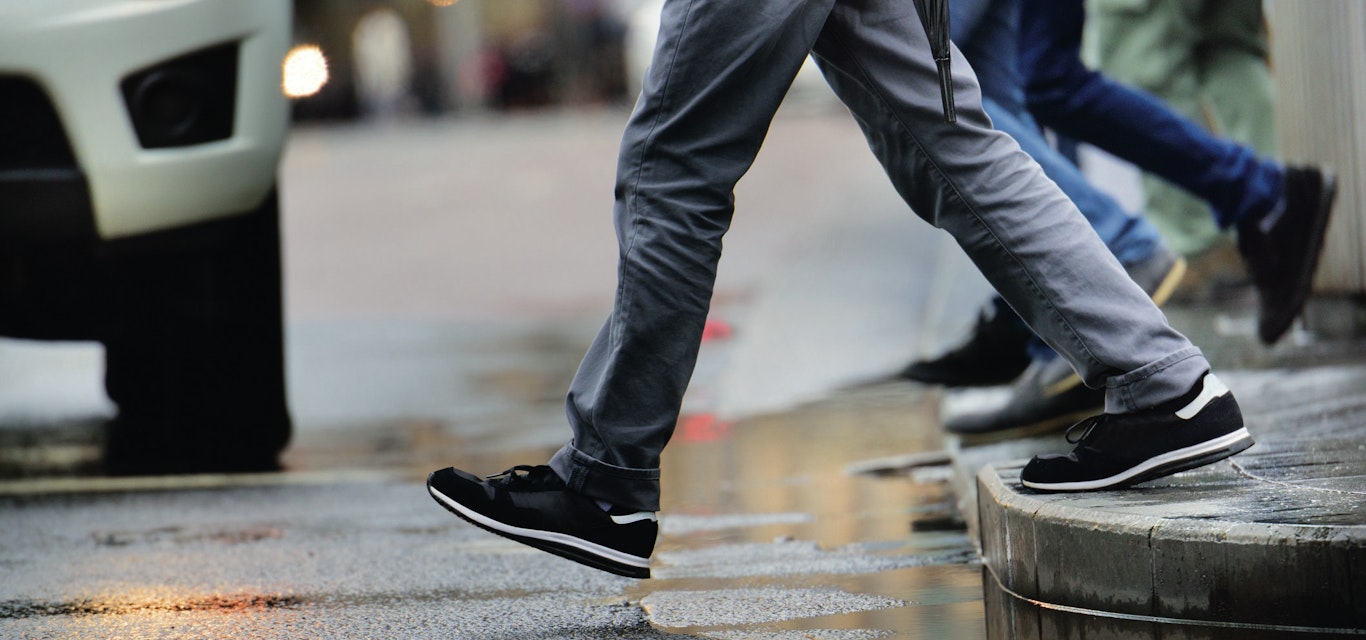These streets were made for walking
Courtesy and common sense can change the pedestrian experience for everyone.
Not everyone drives a vehicle but just about everyone is a pedestrian. You become one after you park your car, your bike, your scooter, or get off a bus, or out of a taxi. Walking is a great transport choice. It’s healthy and you get to soak up the city sights you wouldn’t see behind the wheel. It helps the environment as it means lower vehicle emissions and less congestion. And it’s great for the economy too – if you’re strolling around the city you are more likely to make a quick decision to duck into a shop and spend. If we can instil in our children the benefits of walking, the impact will be even greater in the years ahead.
Just walking to the bus is a plus, or if you have a long commute, parking further from the city will give you an invigorating 30 minutes or so to get your heart pumping. Of course, being a pedestrian – and in particular, a child walking to school – is not without its rules and responsibilities for both walkers and drivers.
Children are our most vulnerable road users and with more traffic and more transport options, teaching kids to be safe on and around our roads is more important now than ever before.
Even outside the 40km school zones, drivers need to be extra vigilant. And we need to ensure children know the rules around pedestrian crossings, light-controlled intersections and roads where there are no footpaths.
We conduct government-funded programs in Tasmanian primary schools, high schools and colleges to hammer home the road safety message. They have served the state well but unfortunately, they don’t reach every school.
We know that school-based road safety programs are an incredibly powerful way to help educate the next generation.
But even over the past two or three years so much has changed that isn’t included in the school-based programs on offer. And we need to ensure we also reach parents so they can encourage good habits that will translate from the footpath to the road.
That’s why the state government needs to commit to reviewing school-based road safety education programs to extend them and to ensure they remain relevant.
Adults need to be setting the example with their own behaviour, not just behind the wheel, but as pedestrians. Footpaths are a shared space, just as our roads are. They therefore require the same courtesy, patience, understanding and co-operation that are part of being a good, safe driver.
The same poor behaviour we see from some car drivers easily translates to the footpath.
We curse drivers who run red lights, but we often ignore the red light when we become a pedestrian.
We are seeing more risky behaviour by pedestrians, particularly with mobile phones causing distraction, just as they do behind the wheel. That’s why the state government has launched its new pedestrian behaviour campaign.
When you are behind the wheel or on another wheeled device, we all know the rule: you keep to the left. It’s an unwritten rule when you’re walking.
Keeping left on a footpath used to be one of those common courtesies. Now we more often wander at will when we walk, with the added multi-tasking challenge of using our phones.
Even outside the 40km school zones, drivers need to be extra vigilant
Or we might be having a group conversation, three abreast, as we take a stroll.
It is even more important to keep to the left and walk a steady course, especially if you have headphones in and cannot hear approaching walkers or vehicles. It will be equally important for e-scooter riders to observe the same courtesies as we move towards trials of this latest transport mode in Launceston and Hobart.
Tasmania’s cities and towns are wonderfully walkable places – even more so when we think about the best way to share the experience and the space with thousands of others every day.
So, be bold today and do something simple to make your city a better place.
Community Education
We offer a range of road safety programs to schools. Find out more on our Community Education page.
